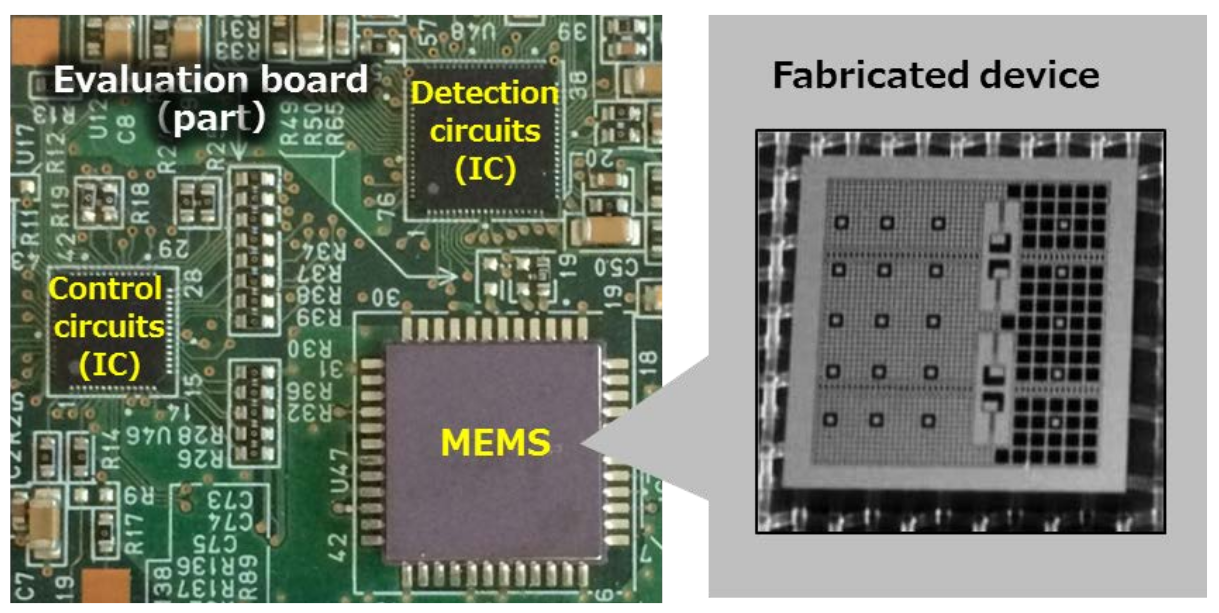By Jean-Jacques DeLisle, contributing writer
Japanese multinational conglomerate company Hitachi, Ltd. announced that it has developed a new MEMS accelerometer that can detect vibrations up to three orders of magnitude smaller than previous designs that target automotive applications. The new accelerometer mixes previous MEMS technology with circuit-based technology, resulting in an achieved sensitivity that compares to that of sensors used for oil and gas exploration but at a fraction of the power consumption. The high-sensitivity low-power MEMS accelerometer can detect vibrations as low as 30 ng/√Hz and only consume 20 mW, less than half the power usage of previous sensors. The challenge that Hitachi faced was creating a sensor that was powerful enough to detect low-frequency vibrations without using a massive amount of power. Doing that is difficult because the power required for sensors increases exponentially as the noise floor is reduced.

Control IC, detection IC, and MEMS device in the accelerometer (left), moving mass inside the MEMS device (right). Image source: Hitachi.
MEMS accelerometers consist of a specific mass mounted on a springboard. This mass is free to move about and has circuits in place that can both detect and control its movements to keep its position balanced. As slight vibrations cause the mass to move relative to its frame, that movement is transmitted or stored for information analysis. Previous MEMS sensors were limited in their ability to detect super-low signals because air molecules within them would collide with the mass itself, slowing it down and altering its movement, which caused readings to be slightly noisy. This tiny interference is negligible for most applications, but for oil and gas exploration or for the detections of artificial earthquakes, precision is of paramount importance.
Hitachi managed to overcome that flaw in previous versions by using sophisticated computers to model and redesign the aerodynamics of the mass within the sensor. In the development of Hitachi’s sensor, unique perforations with different entry/exit diameters based on fluid dynamics analysis were made on the moving mass, which consists of an SOI substrate. The resulting shape halves the number of air molecule collisions and yields sensors with far greater ability to detect low-intensity sounds.
Soon, Hitachi hopes to put its sensors to use not only in oil and gas exploration but also for the detection of earthquakes. Other potential uses could be monitoring infrastructure such as bridges and detecting small vibrations in the ground that could be the sign of structural collapse in buildings. With the advantage of consuming only half the power of competing sensors, we can be sure that Hitachi will have its sensors in a multitude of places in the coming years.
Advertisement
Learn more about Electronic Products Magazine





